It Was Time For Their close-up. Two Days Ago Jupiter and Saturn passed A Tenth Of a Degree from

It was time for their close-up. Two days ago Jupiter and Saturn passed a tenth of a degree from each other in what is known a Great Conjunction. Although the two planets pass each other on the sky every 20 years, this was the closest pass in nearly four centuries. Taken early in day of the Great Conjunction, the featured multiple-exposure combination captures not only both giant planets in a single frame, but also Jupiter's four largest moons (left to right) Callisto, Ganymede, Io, and Europa -- and Saturn's largest moon Titan.
Image Credit: Damian Peach
More Posts from Sergioballester-blog and Others
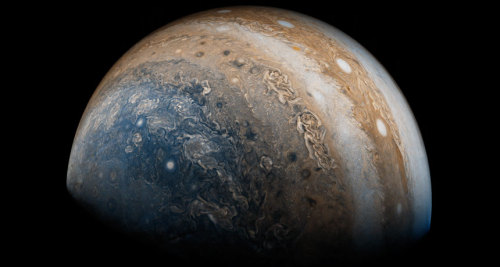









Jupiter Descending

Image of Saturn taken by Cassini spacecraft in October 28, 2016.
Credit: NASA/JPL

Curiosity: Sol 3048 via NASA https://ift.tt/3vSSsDz

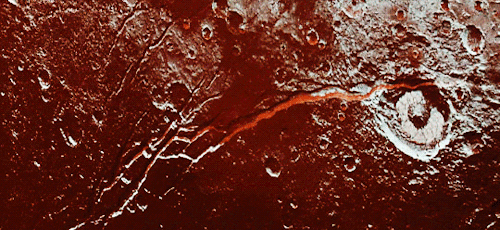
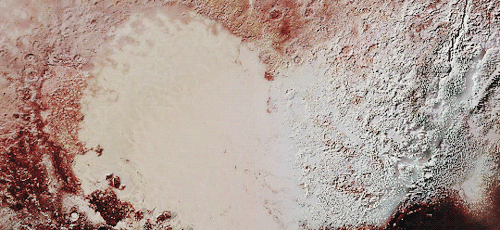
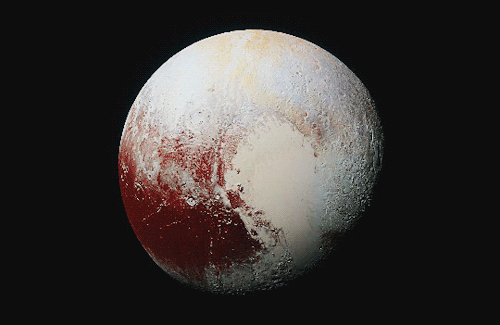


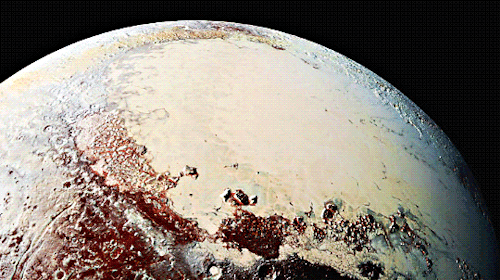


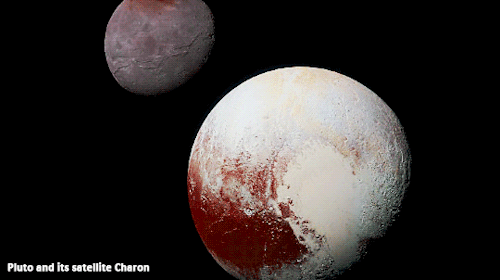
Pluto as seen from NASA’s New Horizons spacecraft ; Its heart-shaped sea is filled with poisonous ice.

If you don’t fight for all women, you fight for no women. ✊🏿✊🏾✊🏽✊🏼✊🏻 (📸: Kennedy Dickerson)

Ocean on the moon Europa
Scientists' consensus is that a layer of liquid water exists beneath Europa's surface, and that heat from tidal flexing allows the subsurface ocean to remain liquid.

Europa's surface temperature averages about 110 K (−160 °C; −260 °F) at the equator and only 50 K (−220 °C; −370 °F) at the poles, keeping Europa's icy crust as hard as granite. The first hints of a subsurface ocean came from theoretical considerations of tidal heating (a consequence of Europa's slightly eccentric orbit and orbital resonance with the other Galilean moons). Galileo imaging team members argue for the existence of a subsurface ocean from analysis of Voyager and Galileo images.

The most dramatic example is "chaos terrain", a common feature on Europa's surface that some interpret as a region where the subsurface ocean has melted through the icy crust.
The thin-ice model suggests that Europa's ice shell may be only a few kilometers thick. However, most planetary scientists conclude that this model considers only those topmost layers of Europa's crust that behave elastically when affected by Jupiter's tides.

The Hubble Space Telescope acquired an image of Europa in 2012 that was interpreted to be a plume of water vapour erupting from near its south pole The image suggests the plume may be 200 km (120 mi) high, or more than 20 times the height of Mt. Everest.
Life?
So far, there is no evidence that life exists on Europa, but Europa has emerged as one of the most likely locations in the Solar System for potential habitability. Life could exist in its under-ice ocean, perhaps in an environment similar to Earth's deep-ocean hydrothermal vents. Even if Europa lacks volcanic hydrothermal activity, a 2016 NASA study found that Earth-like levels of hydrogen and oxygen could be produced through processes related to serpentinization and ice-derived oxidants, which do not directly involve volcanism.

In 2015, scientists announced that salt from a subsurface ocean may likely be coating some geological features on Europa, suggesting that the ocean is interacting with the seafloor. This may be important in determining if Europa could be habitable. The likely presence of liquid water in contact with Europa's rocky mantle has spurred calls to send a probe there.
Missions

Europa Clipper is an interplanetary mission in development by NASA comprising an orbiter. Set for a launch in October 2024, the spacecraft is being developed to study the Galilean moon Europa through a series of flybys while in orbit around Jupiter.

The Europa Lander is a proposed astrobiology mission concept by NASA to Europa, an icy moon of Jupiter. If funded and developed as a large strategic science mission, it would be launched in 2027 to complement the studies by the Europa Clipper orbiter mission and perform analyses on site. NASA's budget for fiscal year 2021 neither mandates nor allocates any funds to the mission leaving its future uncertain.
The objectives of the mission are to search for biosignatures at the subsurface ≈10 cm, to characterize the composition of non-ice near-subsurface material, and determine the proximity of liquid water and recently erupted material near the lander's location.
source

July 20, 1969
Project Apollo on Flickr

Discovery Shuttle docked to the ISS. 🌎🚀
Mars Helicopter: 6 Things to Know About Ingenuity

When our Perseverance Mars rover lands on the Red Planet on Feb. 18, 2021, it will bring along the Ingenuity helicopter.
This small-but-mighty craft is a technology demonstration that will attempt the first powered, controlled flight on another planet. Its fuselage is about the size of a tissue box, and it weighs about 4 pounds (1.8 kg) on Earth. It started out six years ago as an implausible prospect and has now passed its Earthbound tests.
Here are six things to know about Ingenuity as it nears Mars:
1. Ingenuity is an experimental flight test.

This Mars helicopter is known as a technology demonstration, which is a project that aims to test a new capability for the first time with a limited scope. Previous technology demonstrations include Sojourner, the first Mars rover, and the Mars Cube One (MarCO) CubeStats that flew by Mars.
Ingenuity does not carry any science instruments and is not part of Perseverance’s science mission. The only objective for this helicopter is an engineering one – to demonstrate rotorcraft flight in the thin and challenging Martian atmosphere.
2. Mars won’t make it easy for Ingenuity.

Mars’ atmosphere is around 1% the density of Earth’s. Because of that lack of density, Ingenuity has rotor blades that are much larger and spin faster than a helicopter of Ingenuity’s mass here on our planet. It also must be extremely light to travel to Mars.
The Red Planet also has incredibly cold temperatures, with nights reaching minus 130 degrees Fahrenheit (-90 degrees Celsius) in Jezero Crater, where our rover and helicopter will land. Tests on Earth at the predicted temperatures indicate Ingenuity’s parts should work as designed, but the real test will be on Mars.
3. Ingenuity relies on Perseverance for safe passage to Mars and operations on the Martian surface.

Ingenuity is nestled sideways under Perseverance’s belly with a cover to protect the helicopter from debris during landing. The power system on the Mars 2020 spacecraft periodically charges Ingenuity’s batteries during the journey to the Red Planet.
In the first few months after landing, Perseverance will find a safe place for Ingenuity. Our rover will shed the landing cover, rotate the helicopter so its legs face the ground and gently drop it on the Martian surface.
4. Ingenuity is smart for a small robot.

NASA’s Jet Propulsion Laboratory will not be able to control the helicopter with a joystick due to delays communicating with spacecraft across interplanetary distances. That means Ingenuity will make some of its own decisions based on parameters set by its engineering team on Earth.
During flight, Ingenuity will analyze sensor data and images of the terrain to ensure it stays on a flight path designed by project engineers.
5. The Ingenuity team counts success one step at a time.

Ingenuity’s team has a long list of milestones the helicopter must pass before it can take off and land in the Martian atmosphere.
Surviving the journey to and landing on Mars
Safely deploying onto the Martian surface from Perseverance’s belly
Autonomously keeping warm through those intensely cold Martian nights
Autonomously charging itself with its solar panel
Successfully communicating to and from the helicopter via the Mars Helicopter Base Station on Perseverance
6. If Ingenuity succeeds, future Mars exploration could include an ambitious aerial dimension.

The Mars helicopter intends to demonstrate technologies and first-of-its-kind operations needed for flying on Mars. If successful, these technologies and flight experience on another planet could pave the way for other advanced robotic flying vehicles.
Possible uses of a future helicopter on Mars include:
A unique viewpoint not provided by current orbiters, rovers or landers
High-definition images and reconnaissance for robots or humans
Access to terrain that is difficult for rovers to reach
Could even carry light but vital payloads from one site to another
Make sure to follow us on Tumblr for your regular dose of space: http://nasa.tumblr.com
The first palaeontologist on Mars

(Image: Artist’s impression of NASA’s Perseverance rover on Mars)
Today NASA’s Perseverance rover landed on Mars. I don’t usually talk astronomy on this blog, but this time it’s relevant because—as you might have read—Perseverance is more or less the first palaeontologist on Mars!
Let me explain.

(Image: Satellite topography map of Jezero Crater, the site where Perseverance landed)
The site where Perseverance is landing, Jezero Crater, is a meteor impact crater near Mars’s Equator (say that 10 times fast!). It has evidence of a delta—the geomorphic feature that occurs when running water enters a large body of water. Orbital analyses also suggest it’s filled with carbonate rock—the kind that tend to deposit at the bottom of bodies of water.
Jezero Crater is not filled with water today. But the evidence strongly suggests it once was. If we’re going to find evidence of life on Mars, this is a good place to start looking.
Microbial fossils
When you think of fossils, most people think of giant T. rex skeletons, or frozen woolly mammoths, or neanderthal skulls. Maybe you’ve been around the block a bit, and you think about corals, or plant fossils, or tiny fossil shells. But some of the most common and important fossils on Earth are even tinier. Microbial fossils are commonly made by bacteria, archaea, and the like.

(Image: A cross-section of a stromatolite fossil, showing the multiple layers)
Some of the earliest fossils on earth are called stromatolites. They occur when bacterial colonies grow together in a mat—then, over time, sediment deposits over the colony, and the bacteria form another layer on top of the previous layer. Over time, many layers can be formed.

(Image: Helium Ion Microscopy image of iron oxide filaments formed by bacteria)
Although we breathe in oxygen and breathe out carbon dioxide, many microbes are not quite so restricted, and can breathe anything from sulphur to iron to methane or ammonia. When they do this, they often leave behind solid waste products, such as the above iron oxide filaments, that give away their presence. We can tell these apart from normal minerals in a number of ways, including by the relative proportions of different isotopes in them.

(Image: Schematic digram showing how molecular fossils form and are studied)
However, some of the most important fossils are molecular fossils. Living organisms produce a variety of different organic molecules; even long after the bodies of these organisms decay, those molecules can stay behind in an altered form for millions or even billions of years. If we’re looking for evidence of life on Mars, this might be our best bet.
Enter Perseverance

(Image: Diagram of Perseverance rover showing different instruments)
The Perseverance rover is overall similar in design to the Curiosity rover that landed in 2012, but there are some key differences—and most relevant here is that it’s a geological powerhouse. It’s got a number of instruments designed to carry out detailed geologic investigations:
RIMFAX is a ground-penetrating Radar unit. Like normal Radar, it works by sending radio waves into the ground; different materials affect the radio waves differently, as do transitions between different materials. This will allow us to, for the first time, study the geology of Mars below the surface to get an idea of what has been going on down there.

(Image: This is the kind of result produced by ground-penetrating radar—a rough image of the stratigraphy below the surface.)
PIXL (Planetary Instrument for X-ray Lithochemistry) shoots x-rays at samples and examines how they fluoresce in reaction. This allows for the detection of the elemental composition of a sample—helping us better understand the geology of the area, and potentially detect signatures of life.
SuperCam is a multi-function laser spectrometer that uses four different spectroscopy methods to examine the composition of samples. They all work in similar ways—essentially, different molecules react to laser stimulation differently, and different amounts of energy are required to make different molecules vibrate. The way that these molecules react can help us identify their composition, and the hope is that this may allow us to detect molecular fossils (these methods allow us to detect molecular fossils on Earth!)
SHERLOC (Scanning Habitable Environments with Raman & Luminescence for Organics & Chemicals) is another spectroscopic instrument—this one, however, is more precise, and optimised for detecting trace biosignatures in samples. It works similar to the above, using an ultraviolet laser to scan a 7 × 7 mm zone for evidence of organic compounds.
In addition to studying samples in situ, Perseverance will package small samples and leave them behind on Mars. A planned future mission will collect these packaged samples and launch them into space, where an orbiter will collect them and—hopefully—return them to Earth. This would be the first time that samples have ever been recovered from Mars, and would go a long way in increasing our understanding of the Martian environment and geology.
There’s no way of knowing yet what Perseverance will find—but even the fact that a robot palaeontologist is on Mars is incredibly exciting. Here’s to many years of discovery!
-
 thirdman000 reblogged this · 1 year ago
thirdman000 reblogged this · 1 year ago -
 rosebella2016 liked this · 3 years ago
rosebella2016 liked this · 3 years ago -
 dragon-jackets liked this · 3 years ago
dragon-jackets liked this · 3 years ago -
 jennifercd1980 reblogged this · 3 years ago
jennifercd1980 reblogged this · 3 years ago -
 diamondtveit reblogged this · 4 years ago
diamondtveit reblogged this · 4 years ago -
 tankman11 liked this · 4 years ago
tankman11 liked this · 4 years ago -
 kahidlawph liked this · 4 years ago
kahidlawph liked this · 4 years ago -
 smlnd liked this · 4 years ago
smlnd liked this · 4 years ago -
 b00ksandp0ems liked this · 4 years ago
b00ksandp0ems liked this · 4 years ago -
 thedoublelettersc liked this · 4 years ago
thedoublelettersc liked this · 4 years ago -
 zhouzihengs reblogged this · 4 years ago
zhouzihengs reblogged this · 4 years ago -
 donewithcrap12 liked this · 4 years ago
donewithcrap12 liked this · 4 years ago -
 xost reblogged this · 4 years ago
xost reblogged this · 4 years ago -
 rizkyamalia5-blog liked this · 4 years ago
rizkyamalia5-blog liked this · 4 years ago -
 chaoticnerdhere liked this · 4 years ago
chaoticnerdhere liked this · 4 years ago -
 sweetieangelic liked this · 4 years ago
sweetieangelic liked this · 4 years ago -
 wisezineprofessorspy liked this · 4 years ago
wisezineprofessorspy liked this · 4 years ago -
 third-gear-trip liked this · 4 years ago
third-gear-trip liked this · 4 years ago -
 astra-peraspera reblogged this · 4 years ago
astra-peraspera reblogged this · 4 years ago -
 bionictech liked this · 4 years ago
bionictech liked this · 4 years ago -
 magpie-69 liked this · 4 years ago
magpie-69 liked this · 4 years ago -
 weirdbutnicesblog reblogged this · 4 years ago
weirdbutnicesblog reblogged this · 4 years ago -
 weirdbutnicesblog liked this · 4 years ago
weirdbutnicesblog liked this · 4 years ago -
 titania-saturnine liked this · 4 years ago
titania-saturnine liked this · 4 years ago -
 gubel-gabol liked this · 4 years ago
gubel-gabol liked this · 4 years ago -
 wolfsong-the-bloody-beast reblogged this · 4 years ago
wolfsong-the-bloody-beast reblogged this · 4 years ago -
 thehollyraven liked this · 4 years ago
thehollyraven liked this · 4 years ago -
 grhouck liked this · 4 years ago
grhouck liked this · 4 years ago -
 lina-unchained reblogged this · 4 years ago
lina-unchained reblogged this · 4 years ago -
 sabrinagrimm reblogged this · 4 years ago
sabrinagrimm reblogged this · 4 years ago -
 haramura reblogged this · 4 years ago
haramura reblogged this · 4 years ago -
 stickeeclean reblogged this · 4 years ago
stickeeclean reblogged this · 4 years ago -
 7thgenscot liked this · 4 years ago
7thgenscot liked this · 4 years ago -
 sandandspace reblogged this · 4 years ago
sandandspace reblogged this · 4 years ago -
 sandandspace liked this · 4 years ago
sandandspace liked this · 4 years ago -
 mymanreedus reblogged this · 4 years ago
mymanreedus reblogged this · 4 years ago -
 jpm1235 liked this · 4 years ago
jpm1235 liked this · 4 years ago